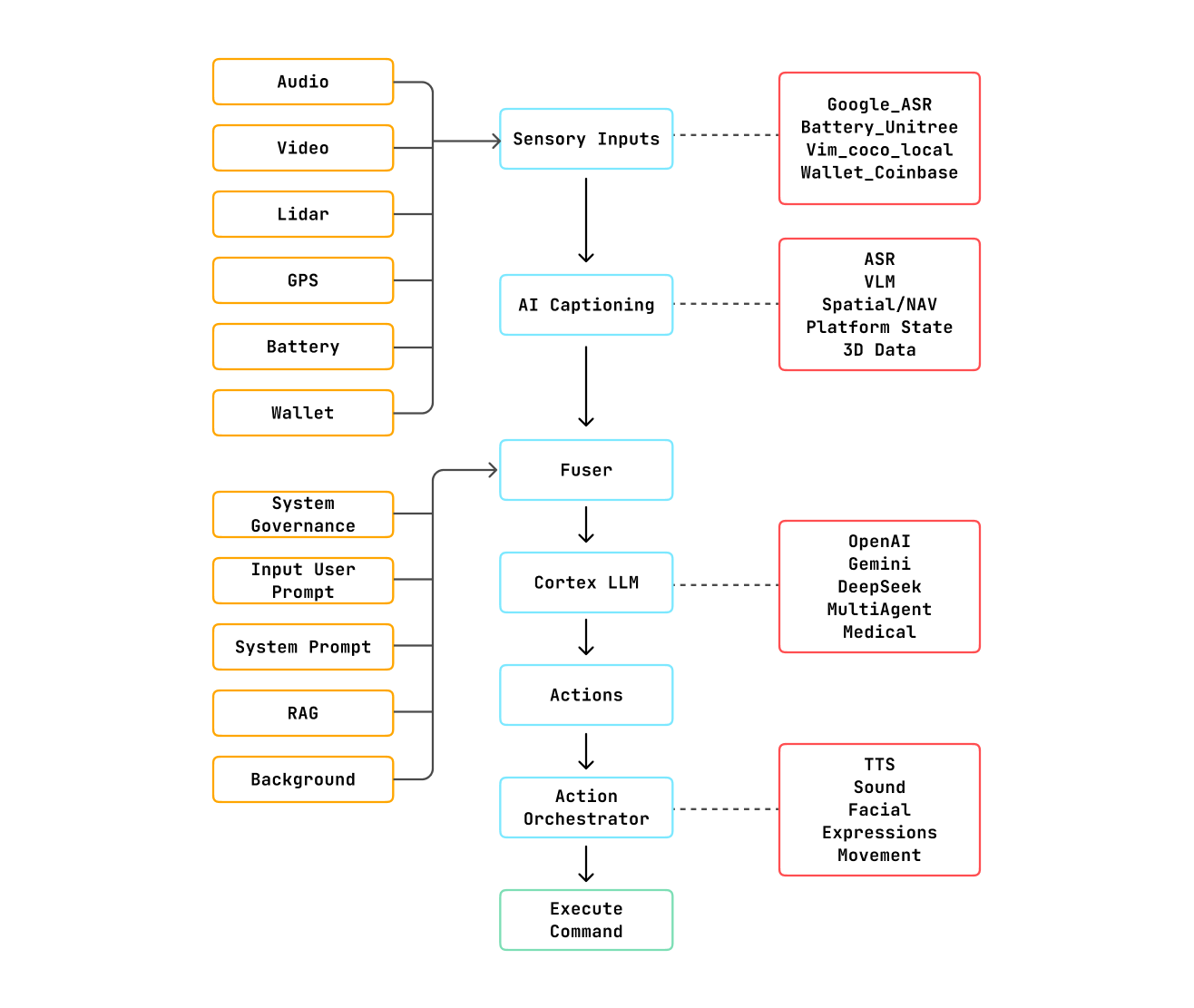Project Structure
self.config.hertz. The loop looks for the most recent data from various sources, fuses the data into a prompt (typical length ~1 paragraph), sends that prompt to one or more LLMs, and then sends the LLM responses to virtual agents or physical robots for conversion into real world actions.
Note - In addition to the core loop running at self.config.hertz, a robot will have dozens of other control loops running at rates of 50-500 Hz (for physical stabilization and motions), 2-30 Hz for sensors such as LIDARS and laserscan, 10 Hz for GPS, 50 Hz for odometry, and so forth. The self.config.hertz setting refers only the basic fuser cycle that is best thought of as the refresh rate of the robot’s core attention and working memory.
Flow Diagram
